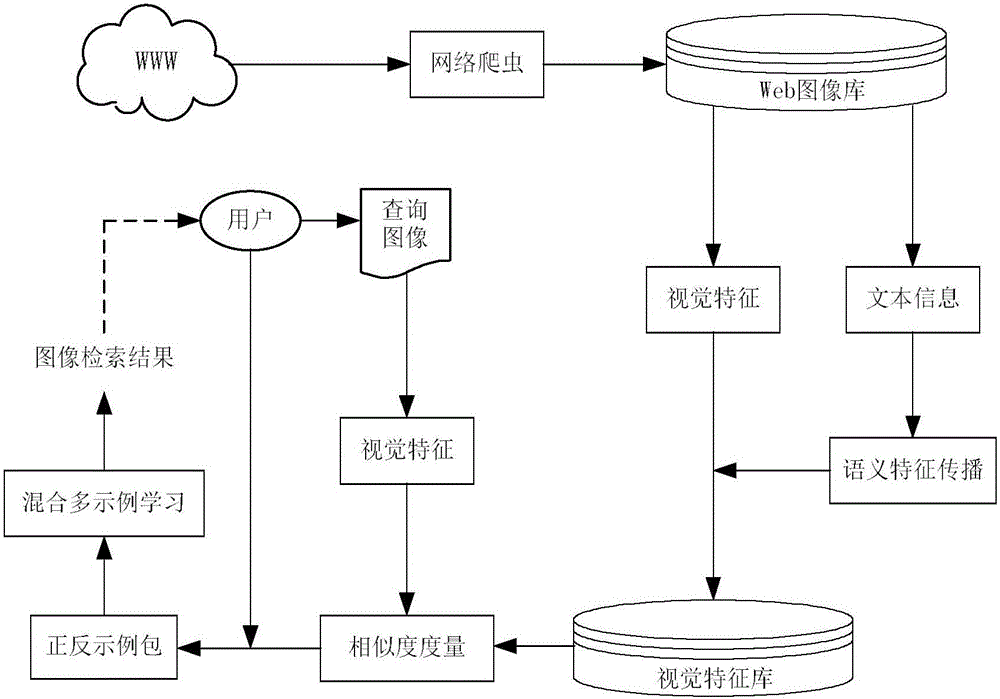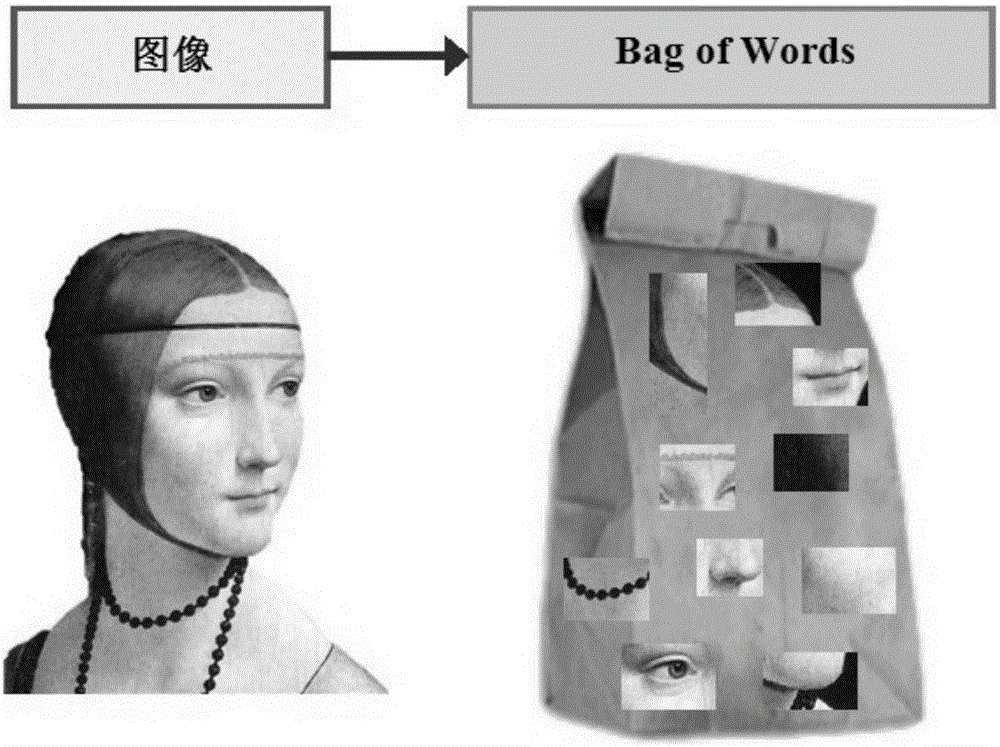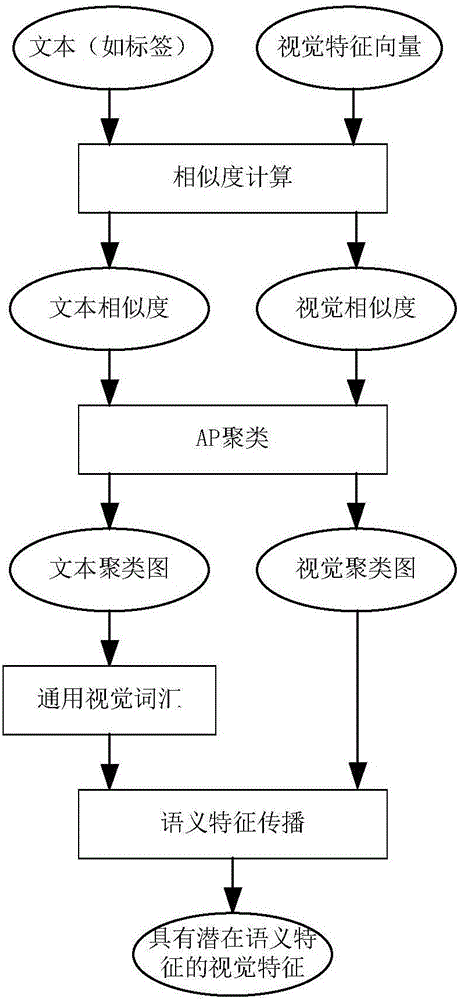Semantic propagation and mixed multi-instance learning-based Web image retrieval method
A technology of multi-example learning and image retrieval, applied in the field of Web image retrieval, can solve the problems of complex relational network, reducing the accuracy of image retrieval, complex operation and so on
- Summary
- Abstract
- Description
- Claims
- Application Information
AI Technical Summary
Problems solved by technology
Method used
Image
Examples
Embodiment Construction
[0098] The present invention provides a Web image retrieval method based on semantic propagation and hybrid multi-instance learning, which narrows the semantic gap in content-based Web image retrieval by utilizing the rich text information of Web images; generally speaking, in an Internet image database In , each image corresponds to both visual features and textual information. However, in many cases, the query images submitted by users in the CBIR system do not have additional text information. Therefore, content-based image retrieval can only be performed in the visual feature space. To this end, the semantic features of the image reflected by the text are propagated to the visual feature vector of the image. The method frame of the present invention is as figure 1 shown.
[0099] The image retrieval problem based on semantic propagation and hybrid multi-instance learning can be described as follows: tens of thousands of images and their corresponding text information ob...
PUM
 Login to View More
Login to View More Abstract
Description
Claims
Application Information
 Login to View More
Login to View More - R&D
- Intellectual Property
- Life Sciences
- Materials
- Tech Scout
- Unparalleled Data Quality
- Higher Quality Content
- 60% Fewer Hallucinations
Browse by: Latest US Patents, China's latest patents, Technical Efficacy Thesaurus, Application Domain, Technology Topic, Popular Technical Reports.
© 2025 PatSnap. All rights reserved.Legal|Privacy policy|Modern Slavery Act Transparency Statement|Sitemap|About US| Contact US: help@patsnap.com



